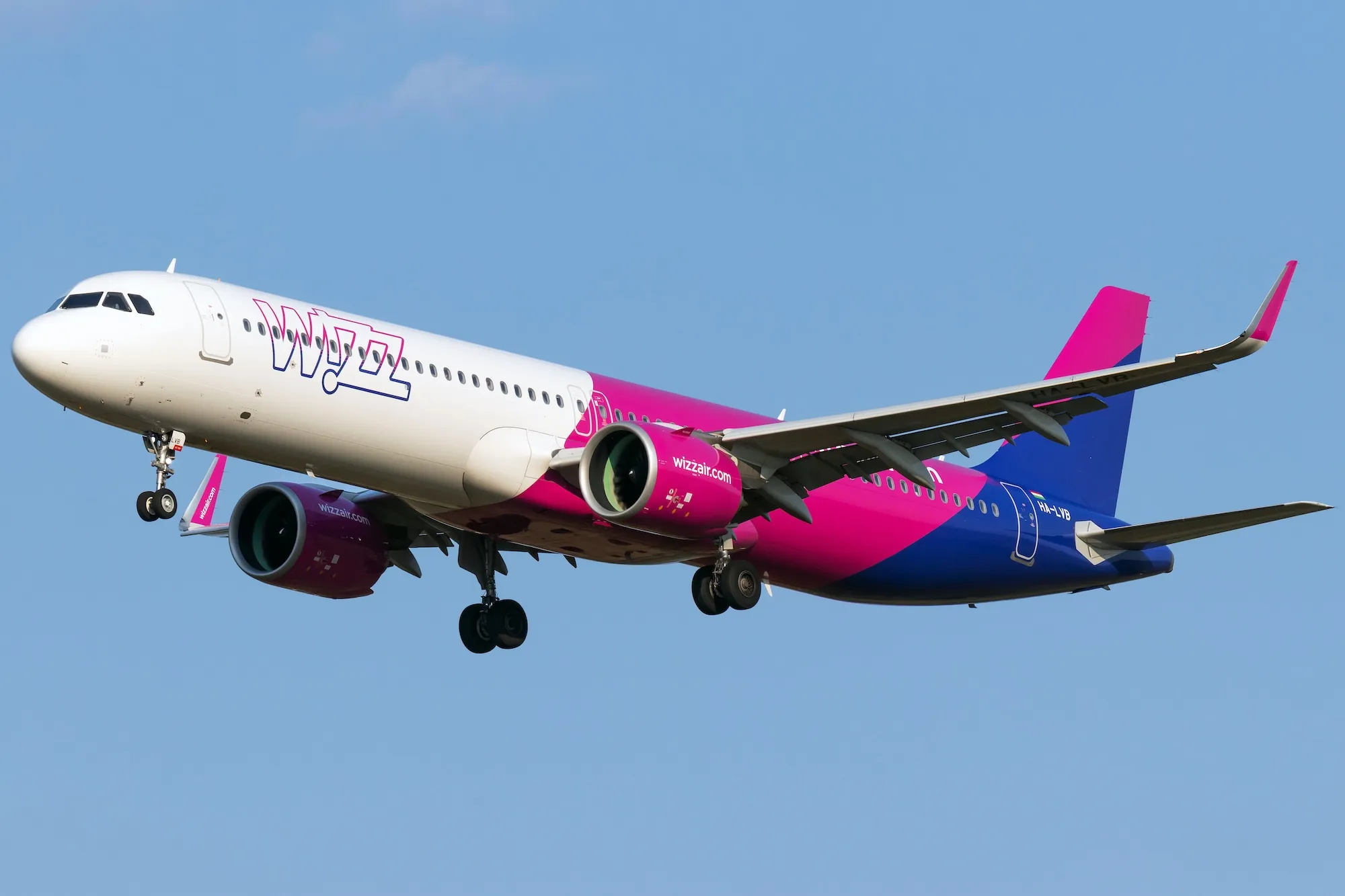DALLAS — This summer, Wizz Air (W6) made headlines with multiple announcements that are set to impact its long-term strategy. Airways sat down with Andras Rado, head of communication at the Hungarian carrier, to learn more about the airline’s outlook.
1) What are the order modifications for the A321XLR?
Wizz Air has significantly scaled back its ambitions for its Airbus A321XLR. The decision reflects its strategic realignment to focus on its fortress markets, primarily in Central and Eastern Europe, as well as to close its joint-venture airline in Abu Dhabi. It’s worth noting that these are not order cancellations, but rather a conversion to the Airbus A321neo aircraft.
This type is better suited for its core European operations, of which W6 is the world’s largest operator, with [70%] of capacity already flown on these super-efficient aircraft. By 2028, W6 will have switched its entire fleet to this new generation aircraft, significantly extending its emissions per passenger superiority over its rivals.
2) How did W6 conclude that refocusing on Europe was the better strategic direction, and is there still interest in having a basis in the Middle East?
Wizz Air's decision to refocus on Europe was driven by several factors affecting its Middle Eastern operations:
- Engine reliability issues in hot climates affected aircraft availability, given the limited number of spare engines in the worldwide fleet.
- Geopolitical instability is leading to frequent airspace closures and operational disruptions.
- Regulatory barriers that limited market access and scalability.
These challenges undermined the airline’s viability in the region. As a result, W6 will suspend all Abu Dhabi-based operations by September 1, 2025, and exit the joint venture. We have not indicated any current plans to maintain or reopen a base in the Middle East, with our focus now being on strengthening our market-leading position in Central and Eastern Europe.
3) With the expanding presence in Poland, can we expect more aircraft to be based in the region?
Yes, W6 is actively expanding its presence in Poland. The airline has recently announced the addition of the sixth aircraft to its Kraków base and the seventh to Katowice (both Airbus A321neo models), as well as the opening of its base at Warsaw-Modlin, which all reflect W6’s long-term commitment to Poland.
The move follows the strategic withdrawal from Abu Dhabi and is part of a broader shift aimed at strengthening operations in Central and Eastern Europe. Poland remains a key market for W6, where our customers demand additional growth, and W6 will deliver.
4) Is there interest in operating new routes from/to Tallinn and Riga?
Yes, W6 is expanding its Baltic operations. From Tallinn, a new route to Venice will launch on December 3, 2025, with twice-weekly service. This reflects growing interest in the region and aligns with W6’s strategy to enhance connectivity across Central and Eastern Europe.
5) What are the engine issues and aircraft grounding status as of mid-summer?
Wizz Air is still facing significant challenges due to issues with the Pratt & Whitney GTF engine. As a result, over 30 aircraft—nearly 20% of the A320neo family fleet—are grounded and expected to remain so through 2026. The airline has signed a commercial support agreement with Pratt & Whitney, which includes operational support and compensation for the grounded aircraft.
This situation has impacted W6’s growth plans and profitability, but WIZZ is back on the growth trajectory again, after a year of stagnation. The airline receives dozens of new aircraft every year, which guarantees its double-digit growth for the following years; however, lifting the grounded aircraft remains one of our key priorities.



.webp)
